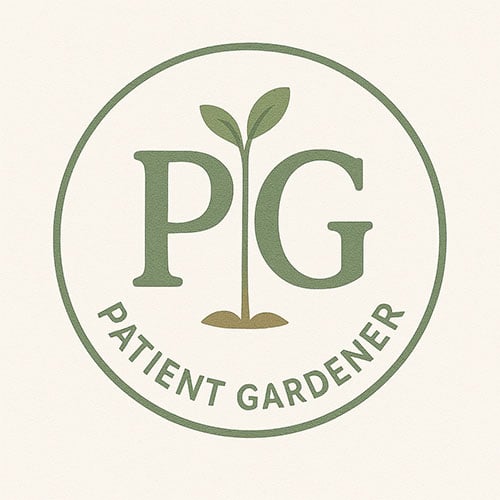Creating free fertilizers and feeds from waste products is a great way to make growing your own fruit, vegetables, and flowers more affordable. It also reduces waste and helps out the planet, so everyone wins.
But what can you use to make your own fertilizers? I have previously talked about Nettles and Comfrey, but today's subject is banana peels! Why bananas? The main reason banana peels are touted as a good fertiliser is that they are nutrient-rich, particularly with high potassium levels. So, let's jump in and see how to make your own banana fertiliser and whether you even should!
The Easy Method
The easiest way to make your own banana peel fertilizer is to grab a large jar, add some water, and then add your banana peels to the jar whenever you have one. Simple.
Let them stew for a while, the longer the better, and then dilute the mucky water with clean water for a nice gentle feed.
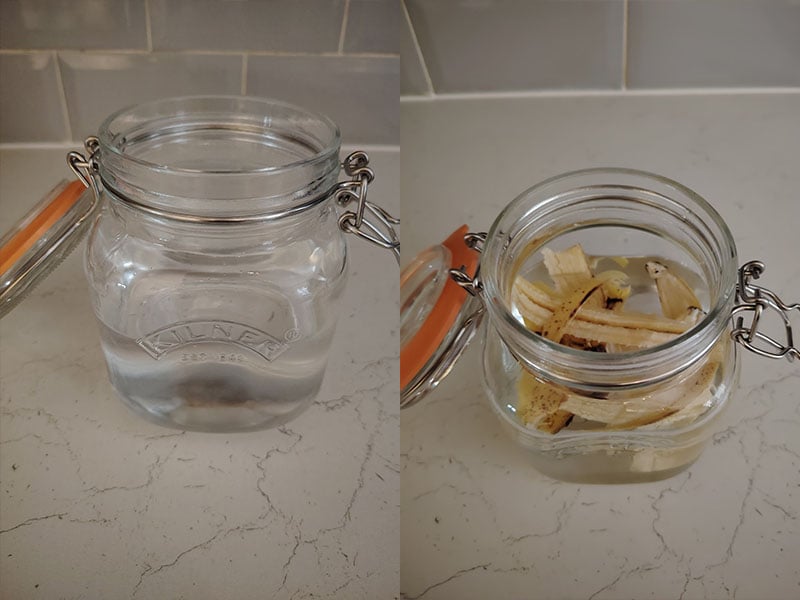
The Dried Method
You can also collect your banana peels, dry them, and then turn them into a powder. This is much more involved than the method above but does have some advantages.
For one, you don't have a tub of rotting bananas lying around, but it also makes for an excellent slow-release fertilizer that can be sprinkled around your plants.
Storing Banana Peels
Before making a dried Banana fertiliser, you must collect lots of skins. Now, unless you really love bananas, then this could take a while.
To prevent your peels from decomposing before use, I store them in the freezer.
Get a freezer bag, pop your peel in, then add it to the freezer. Every time you get another peel, add it to the bag.

Drying Your Banana Peels
What works really well for quickly and easily drying out banana peels is an air fryer. If you have one, then pop them in and set to dehydrate, and away you go.
If you don't, then you can place them on an oven tray and put them in the oven at a low temperature, around 120°F, for 3-4 hours.

When they are done, they will be black and very crispy.
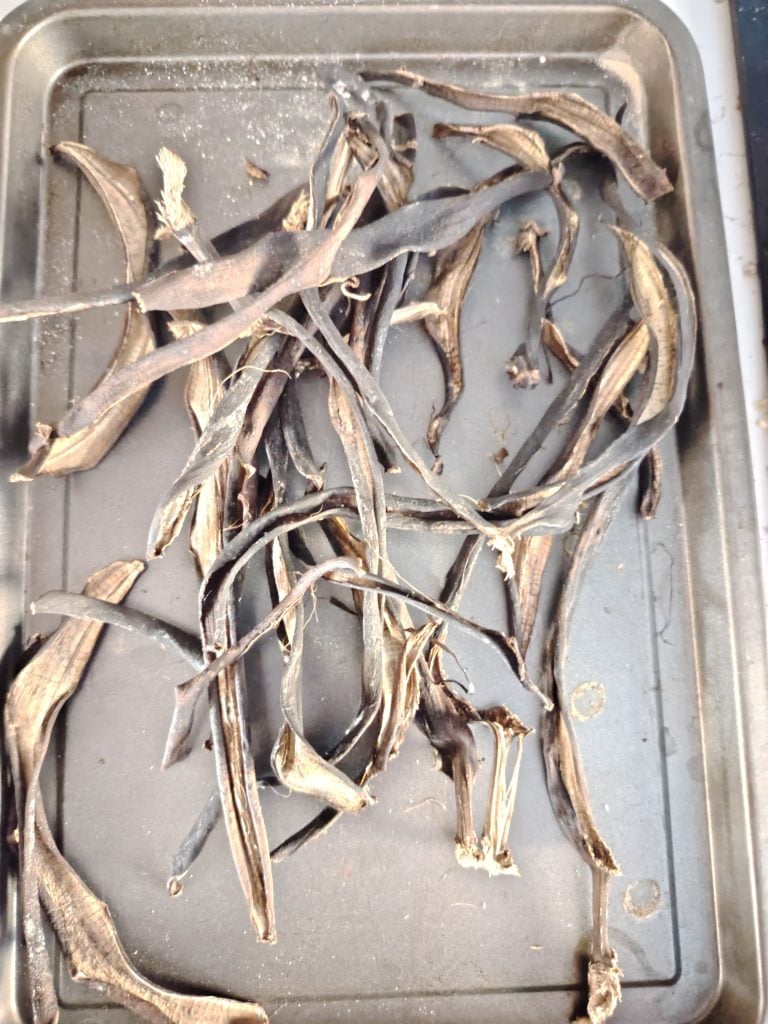
I then blend them up to begin turning them into a powder. I have a simple mini blender from Aldi that I use for this and eggshells, but any type will do.
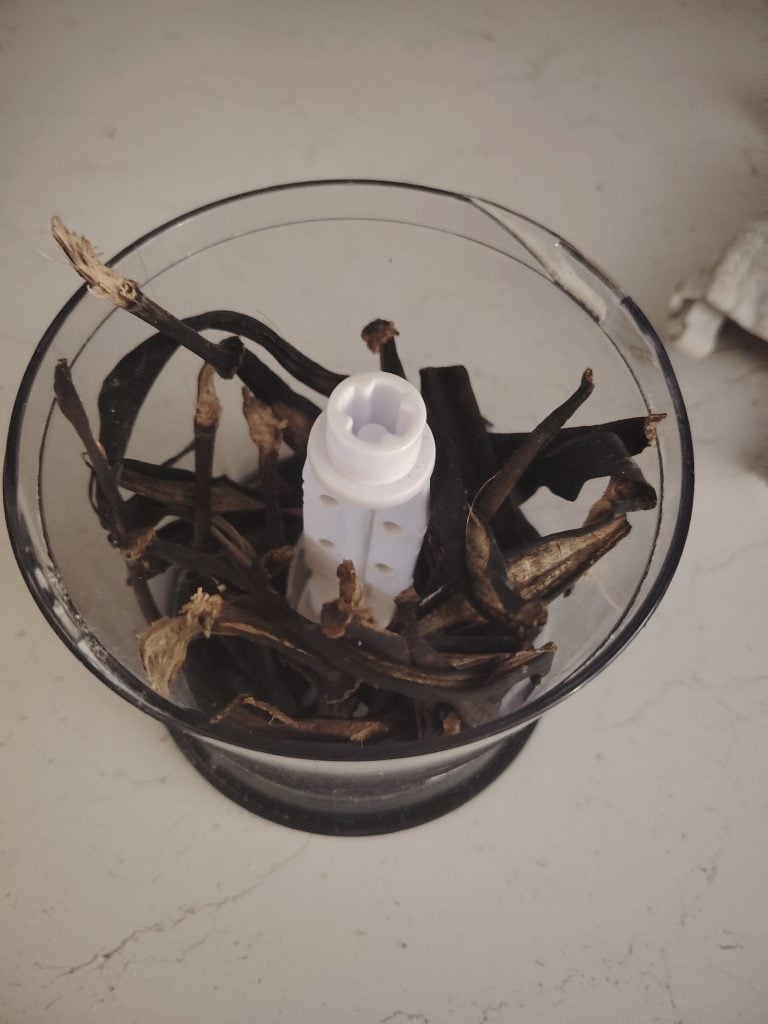
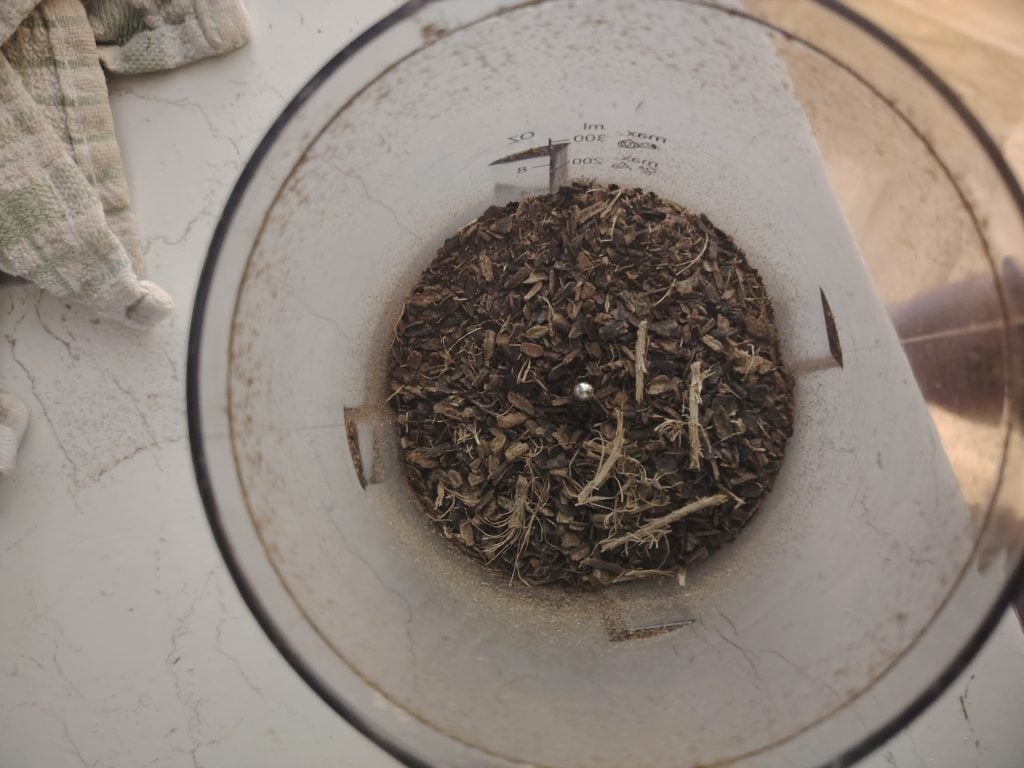
Here's how mine looked after a few minutes in the blender. If you want to make them into an even finer powder, then use a pestle and mortar to really grind them down.

Add your powder to a jar and use it whenever. This is great for sprinkling around plants as a slow-release fertilizer.
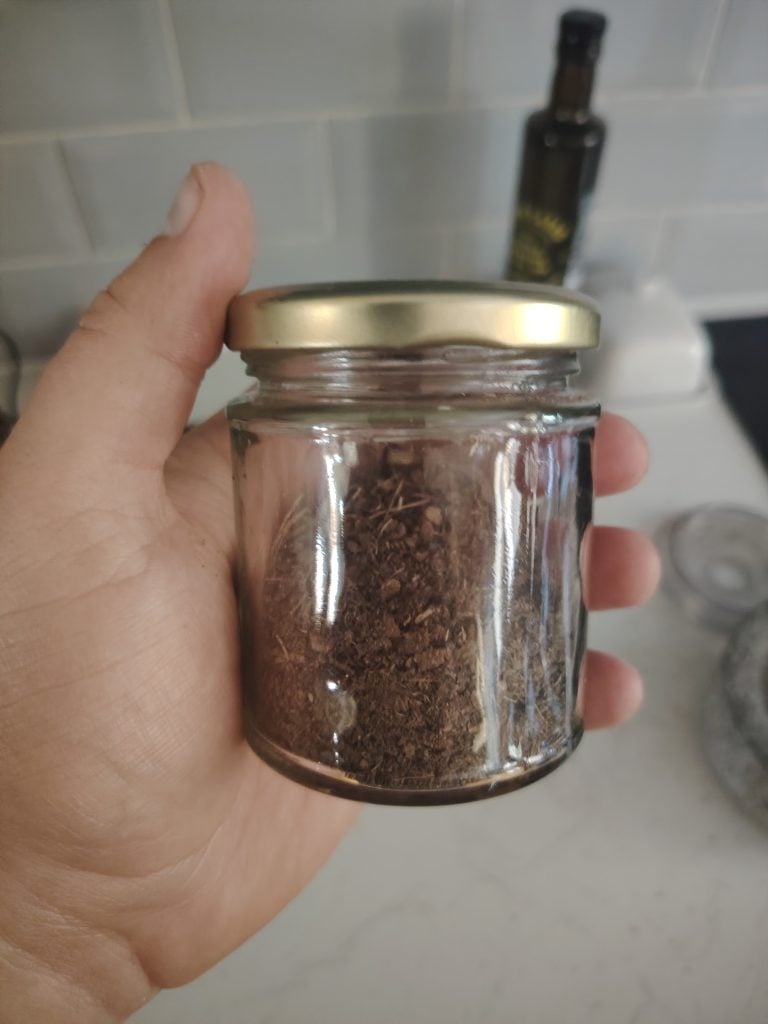
Is It Any Good?
Many gardeners swear by banana peel fertiliser, but since it's homemade, we never really know the nutritional levels it contains. I wanted to see if I could find out whether this homemade freebie is worth all the effort. I obtained a sample and a professional-level soil testing kit from HANNA Instruments and conducted some testing.
Now, before I begin the testing, let me state loud and clear: I am no scientist; I have no scientific background beyond college; I am an amateur in a garden shed – many mistakes could and probably were made in the testing procedure. However, I hope it is enough to give us a good idea of what nutrients are present, if any at all.
First up, Phosphorus. This is a key nutrient that helps overall plant health.

Not much going on there, I would say, even saying trace is a bit of a leap here. So, no phosphorus in this homemade fertiliser, but is there anything else? Remember, what we are really after is potassium - that's why everyone thinks banana peels make a great feed, after all.
But before we get to the biggie, let's have a look at another vital nutrient, nitrogen. Nitrogen is responsible for leafy green growth and is a key component of any fertilizer.
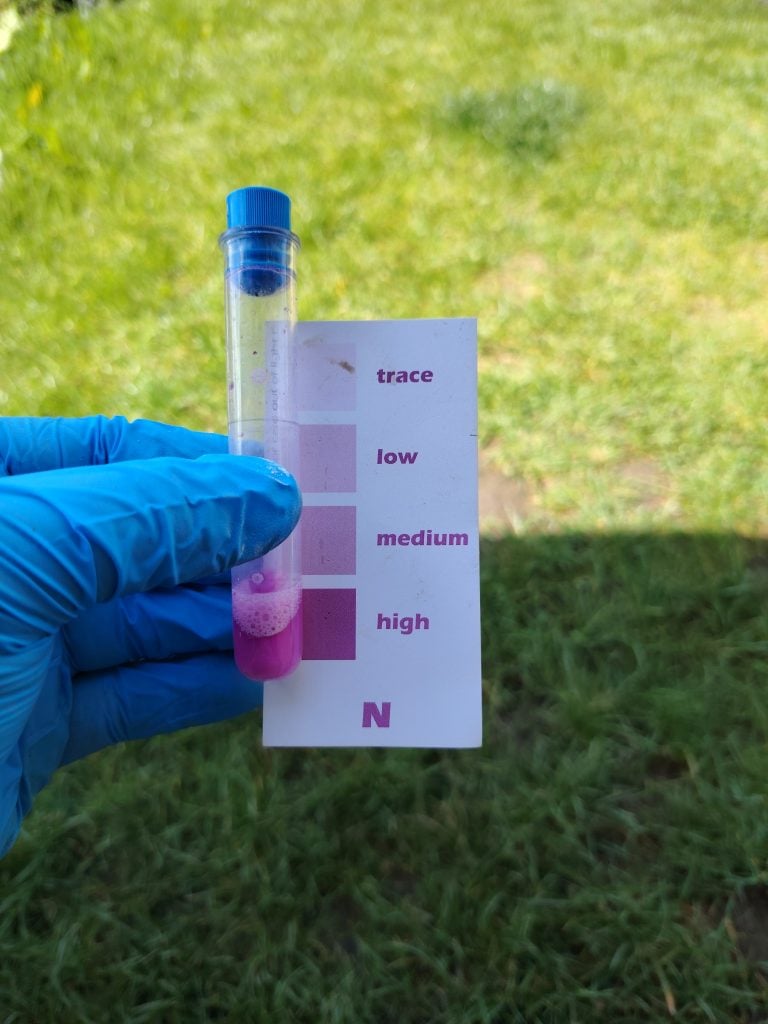
And we have a much better result here. Someone between medium and high, but much nearer to high than medium. An excellent result for something you can make yourself from waste products.
Now for the grand reveal, potassium. Potassium in the garden is responsible for flower and fruit development and is vital in fertilizers for plants like tomatoes and other flowering crops.
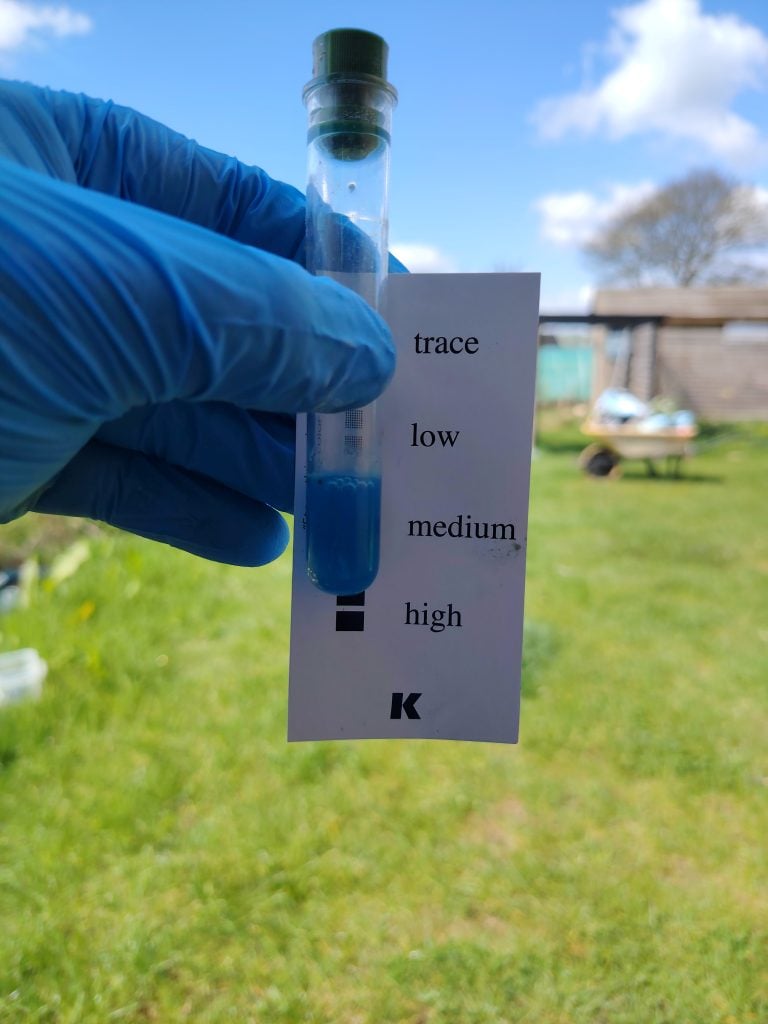
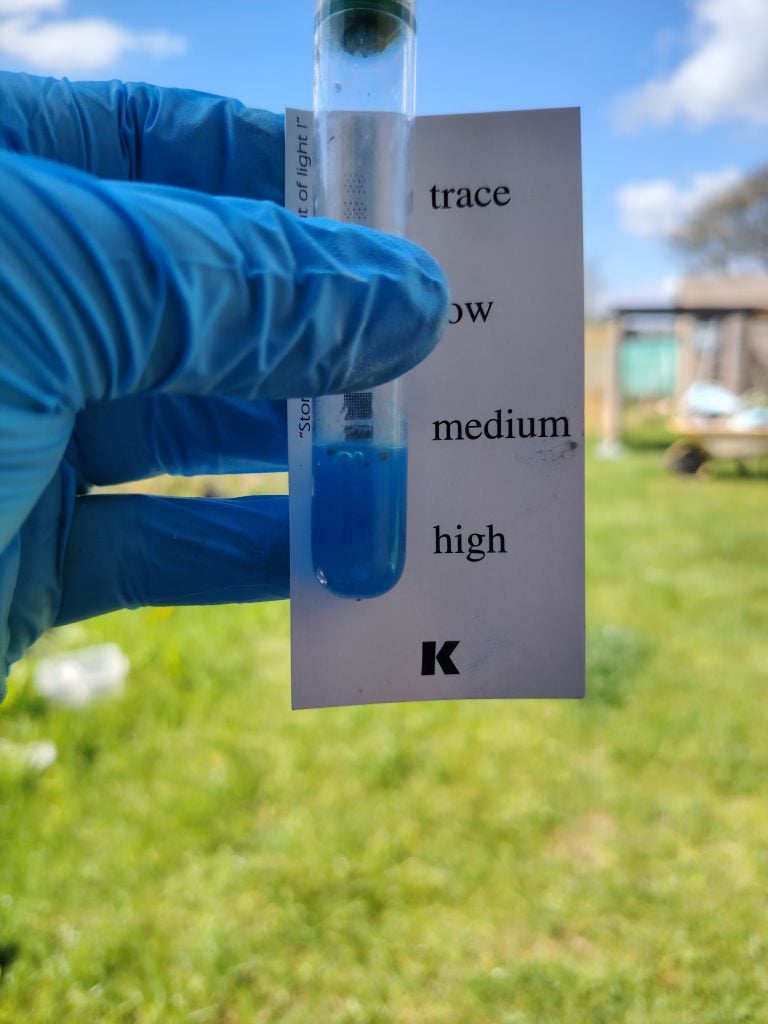
Now, the way the results for this test work is a little different, so just hang with me for a second. This is a turbidity test, which may sound complicated but is actually quite simple. It is essentially a cloudiness test; the cloudier the blue liquid, the more potassium it contains.
You read the results by trying to view the gap between the two black squares through the liquid. As you can see on Medium, you can't see anything through it, so it's definitely above that level - fantastic news!
It doesn't show up too well on the photo, but you can just about make out the lines on the high reading. The final result falls somewhere between medium and high. Being nearer to high than medium, I would say.
And finally, for interest's sake, I conducted a pH test to see where the banana peels landed.
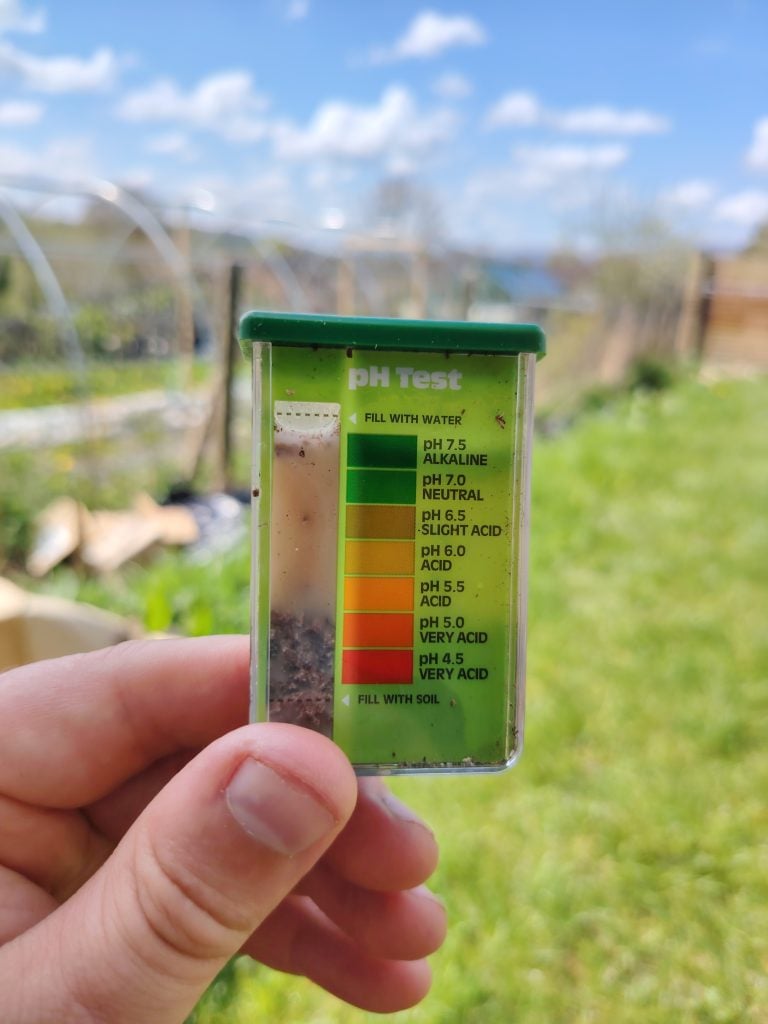
I would say it's slightly acidic, but the results aren't conclusive. This is an issue I always have with these home pH tests; the results never seem to be that clear!
Additionally, it is essential to note that all these results were obtained using undiluted banana water. When you water it down to use on your plants, all the levels will be reduced. I would say this is a good thing; you get a good fertilizer that you can apply regularly without worrying about overdoing it, while still being safe in the knowledge that it contains those essential nutrients.
More Banana Peel Uses In The Garden
Banana peel fertilizers are great, but they're not the only way to utilise banana peels in gardening. Discover other clever methods of repurposing this common kitchen waste to boost your garden's growth. Fruit, bananas, and macronutrients such as potassium, phosphorus, and calcium benefit plants, so it is a wise choice to include organic bananas in your gardening practices.
Pest Deterrent
Banana peel fertilizer can be an effective way to control pests in your garden. Spraying a diluted solution on plants apparently helps repel bothersome insects such as aphids.
A useful bug trap can be created using banana peels and apple cider vinegar.
By combining a small volume of apple cider vinegar with a few tablespoons of chopped banana peel in a jar, and placing a funnel inside, pests like fruit flies, gnats, and fungus gnats are effectively enticed inside and trapped. Refresh the trap every 48 hours for optimal results.
Bury the Peels
Place a portion of the banana peel in the bottom of each hole or container when transplanting tomatoes and potassium-loving plants.
The peel decomposes rapidly, providing essential nutrients for the plant's growth.
Banana Peel Vinegar
Banana peel vinegar can be highly beneficial for acid-loving plants like blueberries and hydrangeas. This fermented liquid offers the ideal acidity for such plants, as opposed to standard banana peel fertilizer.
Winter Soil Enhancer
To rejuvenate the garden soil in the winter, mix banana peels into it after the growing season. Over the cold months, these peels decompose, enriching the soil with nutrients.
Incorporate Them into Compost
Utilise your discarded banana peels to enhance your compost. These organic scraps, like other fruit and vegetable waste, are excellent additions to a compost pile.
They decompose faster than most other materials, quickly benefiting the compost heap. So, if you're unsure about what to do with your banana peels, contributing them to compost is a wise choice.
